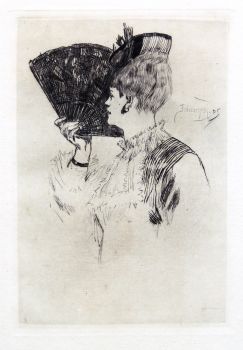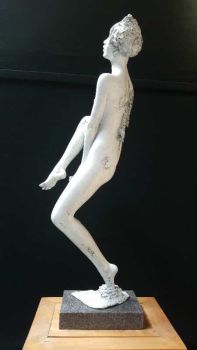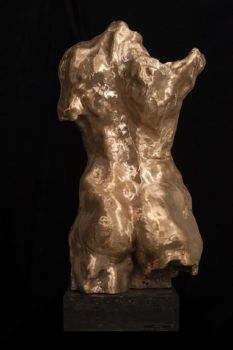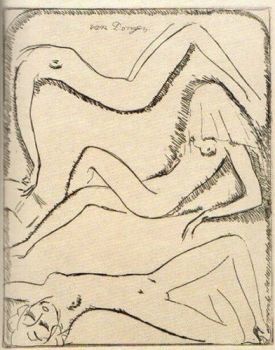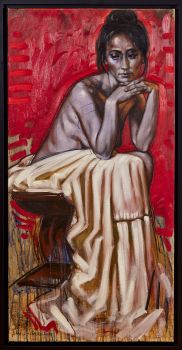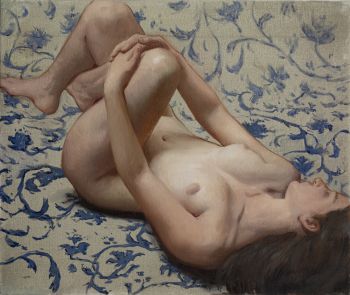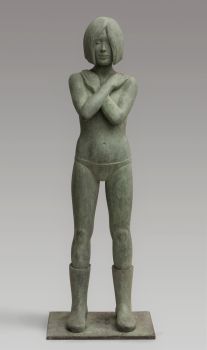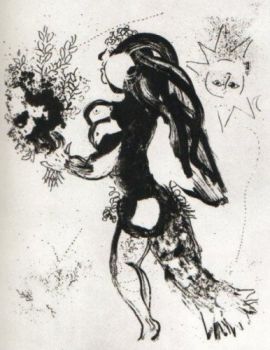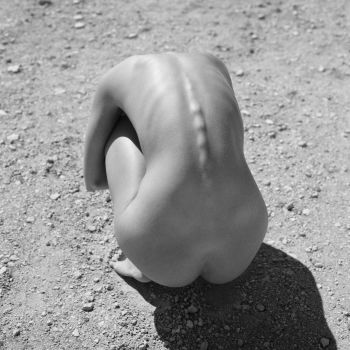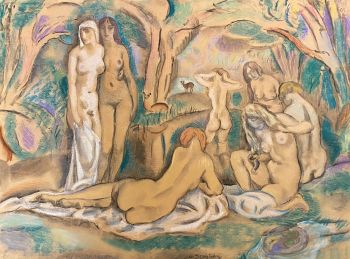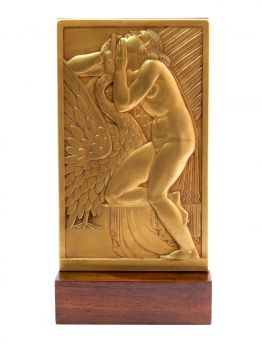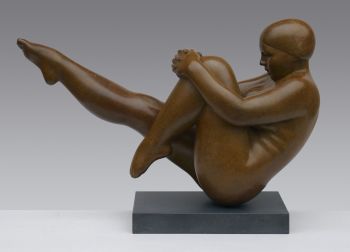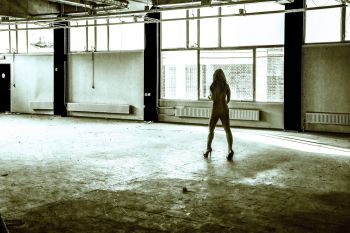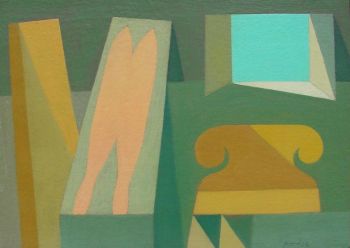Rops' Devil Roses: Eroticism and Satanism in the Art of Félicien Rops
The Belgian artist Félicien Rops (1833-1898) has been largely ignored for a long time, mainly because many of his etchings and engravings have an erotic tone and frequently flirt with death and satanism. He was, nevertheless, a highly successful illustrator, admired by celebrated authors like Charles Baudelaire and Stéphane Mallarmé. His pictures were also an important source of inspiration for famous artists like James Ensor, Edvard Munch, Egon Schiele, Vincent van Gogh and Auguste Rodin.
Les femmes Parisiennes
Rops' best works were inspired by the femmes parisiennes, who had a profound and exciting effect on him when he moved to the French capital in 1862. To him, they seemed like creatures from another planet. Rops thought their wardrobes were bizarre and fantastic and their flesh feverishly seductive, the product of a decadent society of which they were the most exotic flowers.
His etching Manette Salomon or Parisine (1867, fig. 1, available at Gallerease) depicts a portrait of a sophisticated Parisienne with a small hat, holding a large fan near her face.

1.Félicien Rops, Manette Salomon or Parisine, 1867
A Parisienne is also represented in one of Rops most iconic works 'Pornokratès or La Dame au Cochon' (1878, fig.2).
Here the woman is naked, sensually dressed in boots, stockings, long gloves and a Gainsborough hat. Blindfolded and located atop a marble frieze, she haughtily holds a pig on a leash, a symbol of filth and temptation. Rops seems to be poking fun at the proper Parisian society lady walking with a lap-dog. Rather than parading along the boulevards, this lewd woman ambulates mockingly above the weeping personifications of the arts, suggesting that the modern prostitute is truly the new muse of the arts. Pornokratès solidified Rops' growing reputation as the creator of sexually-charged imagery.

2. Félicien Rops, Pornokratès ou La Dame au Cochon, 1878, Musée Félicien Rops, Namur
Not nude but naked
It is remarkable that many of his models are naked, rather than true nudes. Yet, the nude was, during his lifetime, a subject for academicians.As a modernist, Rops didn’t wish to be identified with the traditional academic artists. Moreover, he used some articles of clothing on a nude model, just in order to emphasize their nudity. In doing so Rops’ nudes evoke an unprecedented eroticism.
Look, for example, at his Au Feu! (circa 1878, fig. 3). If we imagine the girl’s headband, shoes and stockings removed, she would more resemble a classical nude. But the presence of these elements indicate a sense of voluptuousness which distinguishes Rops from many other artists.
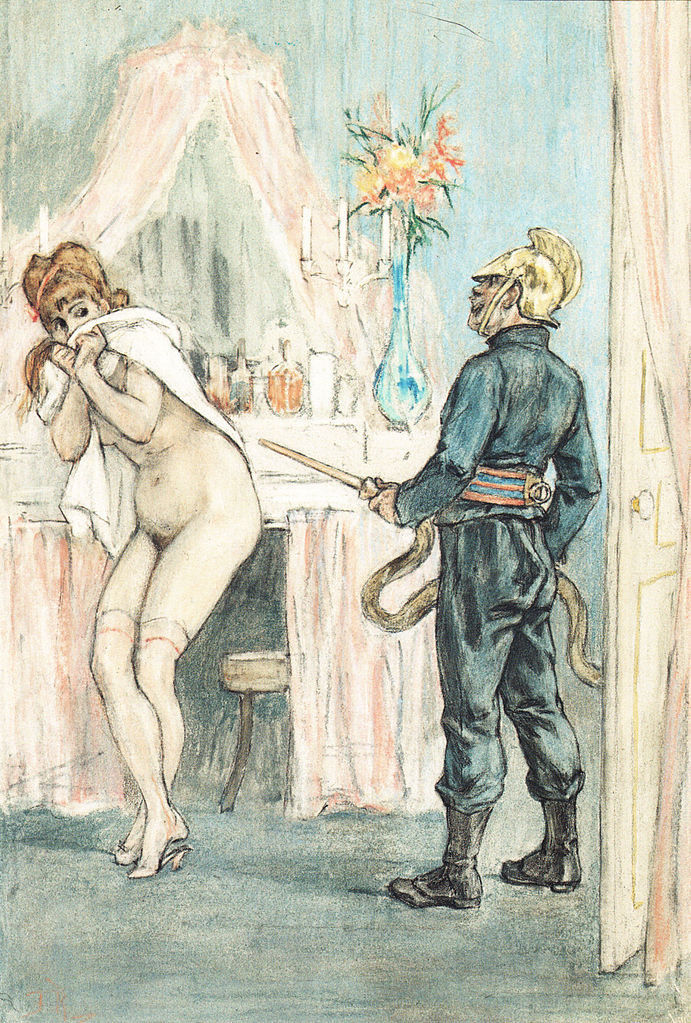
3. Félicien Rops, Au Feu!, circa 1878, Private collection, Brussels
Eroticism and evil
Eroticism is frequently intertwined with the subject of evil in his oeuvre. This is exemplified in his image 'La Femme au Pantin' (1885, fig. 4), which surely must rank among his masterpieces. It shows a graceful lady, attired in a red costume that bares her breasts, wearing a fashionable hat. She raises a male puppet high above a font as if to make a sacrifice, while her left hand clutches a blood-covered dagger. The puppet’s body has been sliced open and coins pour out into the font. A snake, allegorizing the devil, curls round the base of the font and holds an apple in its mouth. The wings of the jester, seated at the foot of the bowl, indicate that he is in fact a little Eros. He, nevertheless, holds a skull in his hands, instead of the traditional arrows of love. The drawing implies that the woman is in thrall to the devil, while the man is in thrall to the woman. Possessed by evil, she exploits man, preys on him, as the fallen coins and the skull of the jester demonstrate.
The picture also provides an answer to the latin words Ubi Mulier? (Where is woman?), visible on the staircase, questioning the very nature of woman. Every element stresses man’s submission to the vicious and seductive powers of womankind. Born a Catholic, Rops seems to have been inspired in various works by the Catholic perception of women, which regards women as the tools of Satan. Therefore, it is significant that Rops called these Paris women “Devil’s Roses”.
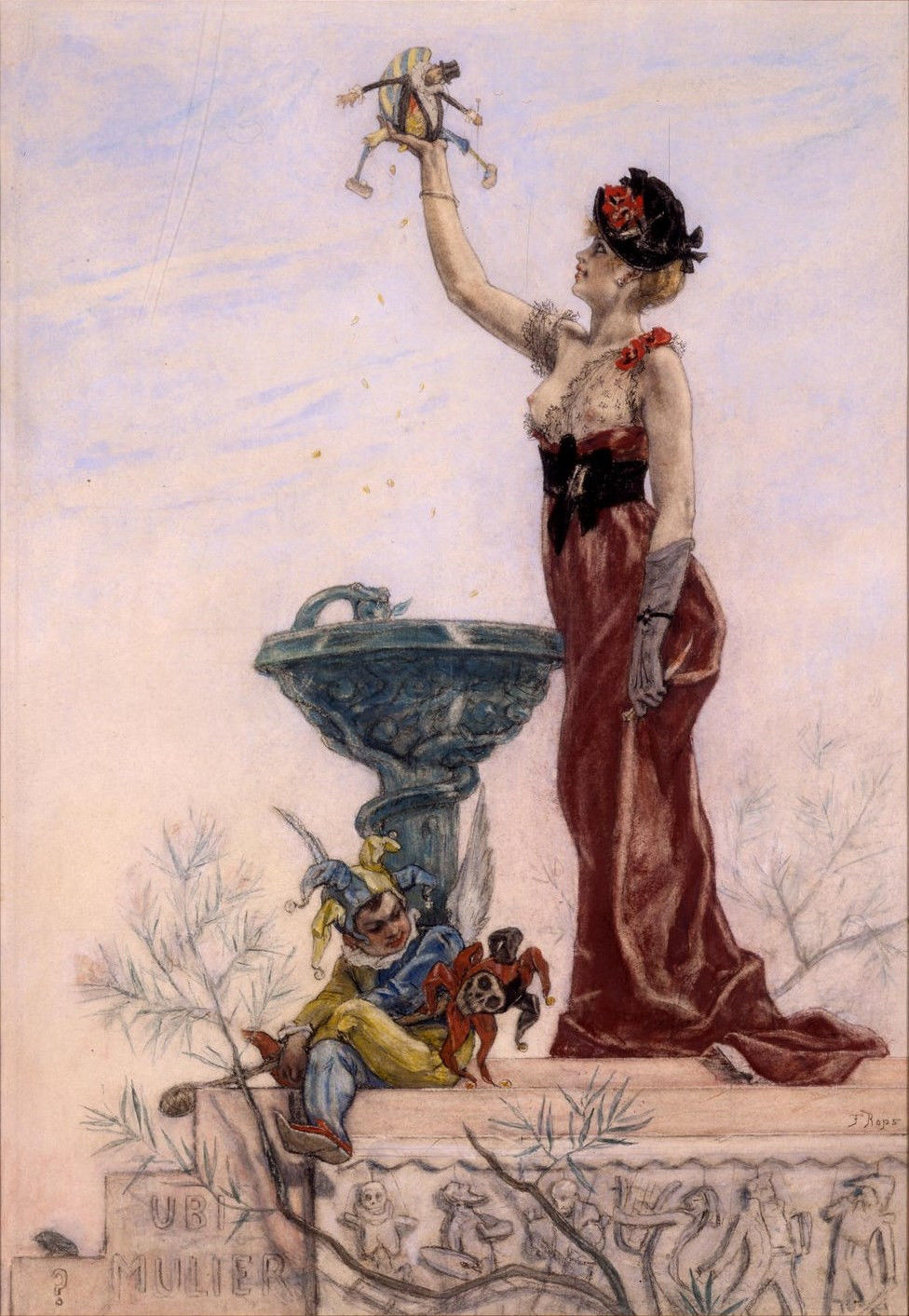
4. Félicien Rops, La Dame au Pantin, 1885. Musée Félicien Rops, Namur.
More works
More about Félicien Rops: visit Musée Félicien Rops in Namur, Belgium. Or Manette Salomon or Parisine (1867, fig. 1, available at Gallerease)
For more nude art art have look here at Gallerease.


